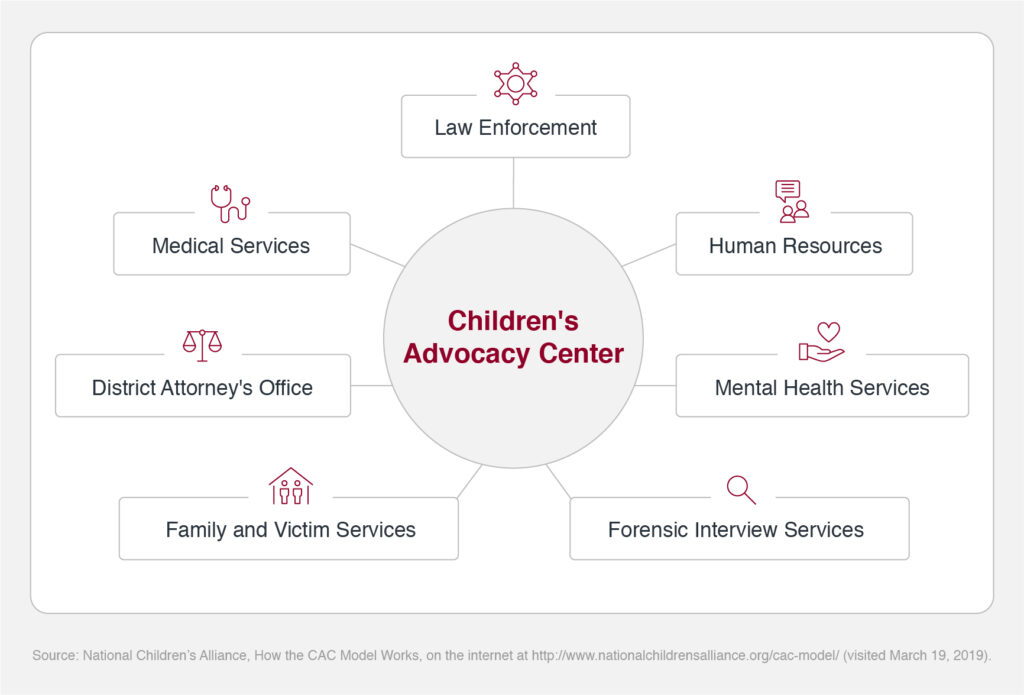Children’s Advocacy Centers are boosting parent and caregiver satisfaction, ensuring specialized medical evaluations, and coordinating investigations to ensure better interventions for child victims of sexual or physical abuse and neglect, according to research by the National Children’s Advocacy Center.
The effects are far-reaching. For example, in Florida alone, more than 34,000 victims of child abuse or neglect were served by the Children’s Advocacy Centers in Florida
Children’s Advocacy Centers in Florida in 2014, and 40% were six or younger. Child abuse takes a costly and moral toll on society, and child advocacy may be poised to reduce the negative impact and improve outcomes.
What is Child Advocacy?
Child advocacy includes any individual, organization or professional network that speaks up for children’s best interests. Generally, this centers on advocating to protect children’s rights’ violations, which occur in cases of domestic, physical and sexual abuses, as well as neglect. This model represents a cohesive approach to addressing child abuse instead of leaving cases to stream through a disjointed system.
How Child Advocacy Started
Former congressman Robert Cramer (AL) launched child advocacy centers (CACs) with the goal of bridging communication between criminal justice systems and social services. Cramer’s Multidisciplinary Team (MDT) approach brought together a variety of fields, including child protective services, medical workers, mental health workers, law enforcement and criminal justice to partner in what are now known as Child Advocacy Centers. In Alabama in 1985, the National Children’s Advocacy Center was established to address a spike in child sexual abuse, and then in 1988, the network of children’s advocacy centers across the U.S. partnered to create the National Network of Children’s Advocacy Centers, which acts as a home base. Today, this is known as the National Children’s Alliance, or NCA. Through the center, thousands of people are trained to recognize and support abused or neglected children.
The CAC Model
A Children’s Advocacy Center (CAC) is a community-based facility focused on children, where allegedly abused or neglected children can come to be interviewed, receive medical exams, and receive other services, including therapy, in a child-friendly, safe environment. At a CAC, professionals across disciplines can collaborate and agree on investigations, treatment plans and legal action for child abuse cases. Overall, the aim is to reduce the amount of trauma child victims experience, offer efficient and thorough services, and improve prosecution of perpetrators. CACs also offer many logistical benefits, such as eliminating the need for transportation for families and reducing trauma by streamlining the process for children.
How It Works
Unlike traditional, separated disciplines that work in isolation, CACs allow for immediate collaboration to improve efficiency: children can tell their story just once, instead of having to repeat it with each unit involved in the system. As a multi-disciplinary team, CACs respond to and investigate abuse reports, pulling in law enforcement for immediate responses and arrest when necessary. Typically, either CPS or law enforcement brings the child to a center, which launches a joint investigation. Forensic interview services can interview children who may have experienced abuse as well, while medical services can provide physical exams. As part of the partnership, the District Attorney’s Office (DA) can review cases and guide investigations, determining which cases are appropriate for prosecution.
Services
In the multi-disciplinary environment of a CACs, many services are available, including:
- Forensic interviews, which are neutral, coordinating and fact-finding to ensure they are legally sound
- Medical evaluations
- Victim support and advocacy, for both victims and their families
- Emotional support for victims and non-offending family members
- Counseling services
- Mental health services (or referrals) and therapeutic interventions
- Case tracking and review
At a community level, CACs also offer training online, at conferences and at centers to equip professionals to respond to physical abuse.
In 2015, the National Children’s Alliance began to partner with the FBI to support federal cases. And, victims of child pornography, trafficked children and sexually exploited children are also supported through the centers.
Today, this multi-disciplinary approach to child advocacy has expanded internationally, taking root in more than 33 countries across the globe. In the United States, more than 300,000 children are served annually by this collaborative approach.
